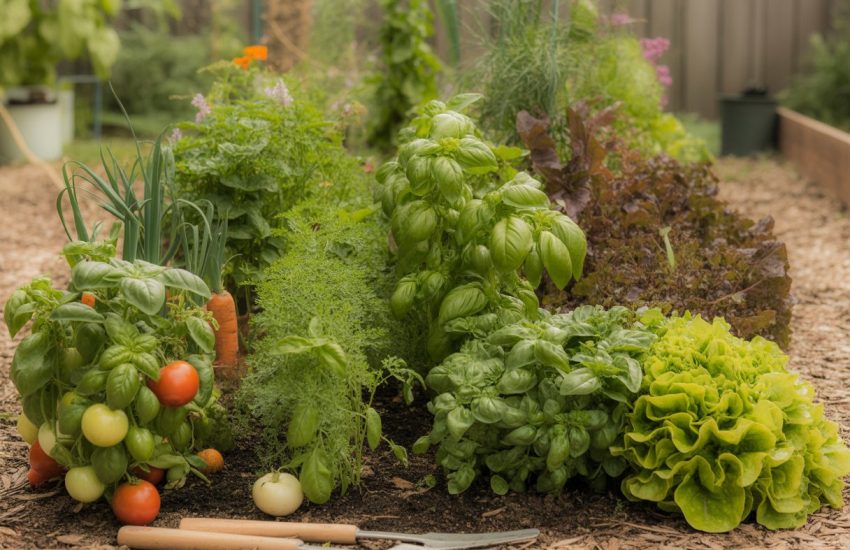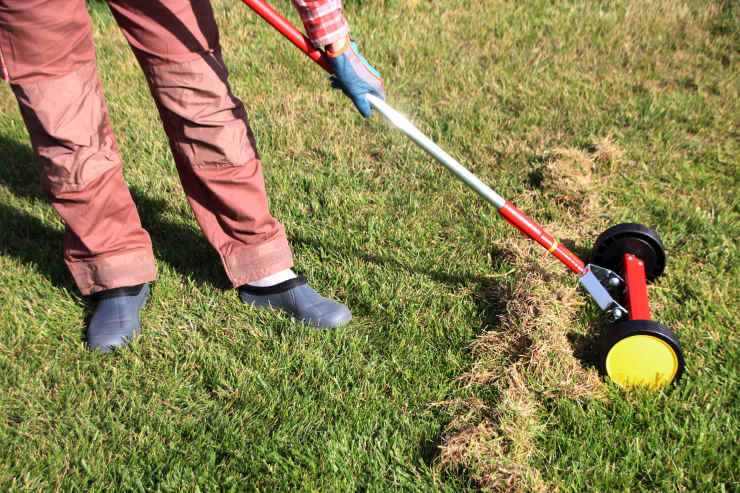Composting Tips for Nebraska Gardeners: Maximizing Soil Health and Growth
Lots of Nebraska gardeners want to improve soil health and cut down on waste by composting, but the state’s unpredictable weather and soil types can complicate things. The key to successful composting here is keeping moisture, materials, and temperature in balance and adapting as needed.
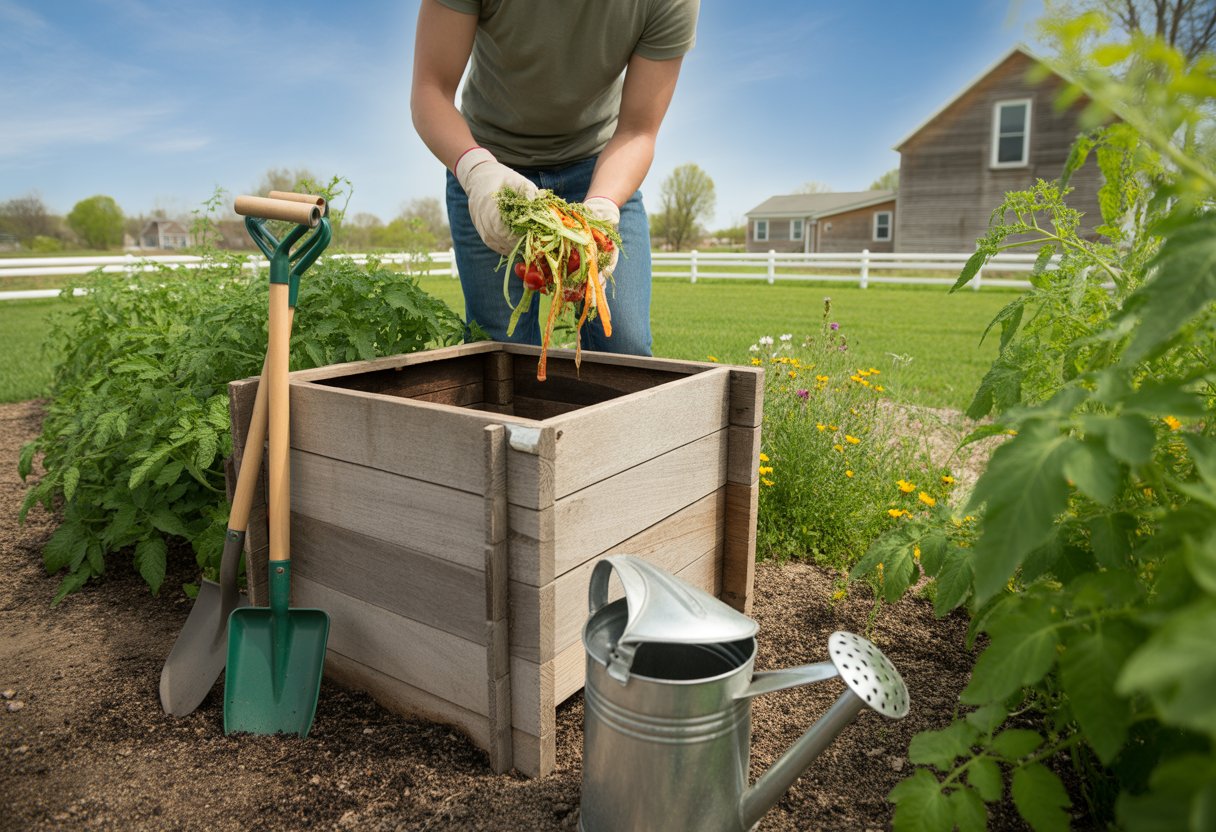
Knowing which organic materials to toss in and how to manage the compost pile can really speed things up. If you manage compost well, you’ll enrich your soil, conserve water, and need fewer chemical fertilizers.
This guide shares Nebraska-specific tips for getting the most out of your compost pile. It’s all about managing compost so your plants thrive and your garden becomes more sustainable.
Composting Fundamentals for Nebraska Gardeners
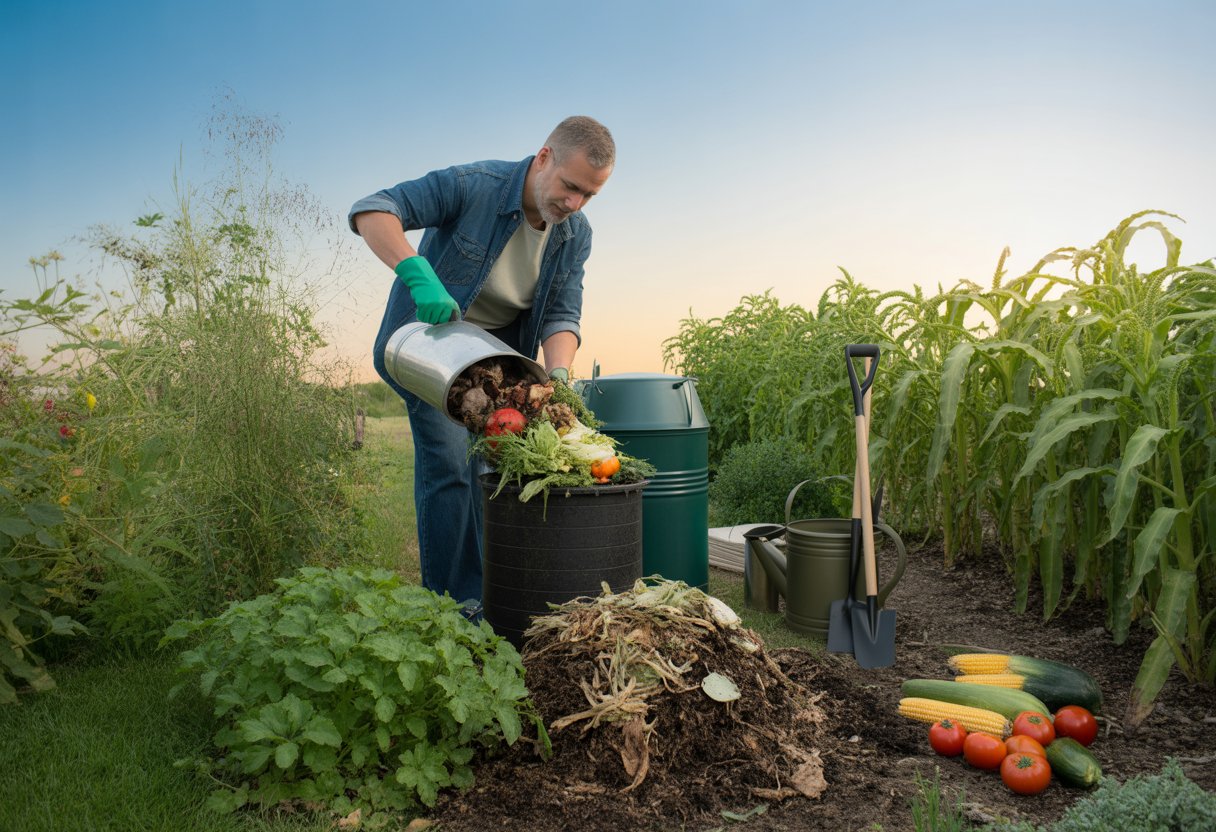
If you want to compost effectively in Nebraska, you’ve got to account for local weather and choose the right materials. Managing moisture and temperature makes a big difference in producing good compost.
Nebraska gardeners need to tweak their approach to fit the climate and improve soil health.
Choosing the Right Composting Method
Most gardeners here pick between traditional piles, bins, or worm composting (vermiculture). Piles and bins work outdoors and handle lots of yard waste.
Bins do a better job containing materials, keeping pests out, and controlling temperature. Vermiculture is great for kitchen scraps, but you’ll need to keep worms indoors or in a sheltered spot when Nebraska winters hit.
Think about your space, how much waste you have, and what materials you can get when deciding on a method. Nebraska Extension suggests turning piles regularly to keep air flowing and help microbes break things down.
Best Materials to Compost in Nebraska
You’ll want a good mix of “green” nitrogen-rich stuff and “brown” carbon-rich stuff. Greens include grass clippings, kitchen scraps, and fresh trimmings. Browns are dry leaves, straw, and shredded newspaper.
Skip meat, dairy, or diseased plants—they bring odors and pests. Nebraska’s seasons mean you’ll have plenty of dry leaves in fall and fresh greens in spring, so use what’s available.
Aim for a 25-30:1 carbon-to-nitrogen ratio to keep things moving. Shred materials if you can, and mix up the layers to help microbes do their thing.
Managing Moisture and Temperature
Compost needs to feel like a wrung-out sponge—damp but not soggy. Too much water leads to bad smells, but too little dries everything out.
Nebraska’s weather swings, so you’ll need to watch moisture. Add water during dry spells and cover the pile when it rains a lot.
Pile size and how often you turn it affect temperature. Compost should heat up to 130-160°F to kill off pathogens and weed seeds. Regular turning and making piles at least 3 to 5 feet wide, tall, and deep help keep things hot.
A compost thermometer comes in handy for checking when to turn or water the pile.
Optimizing Compost for Nebraska’s Climate
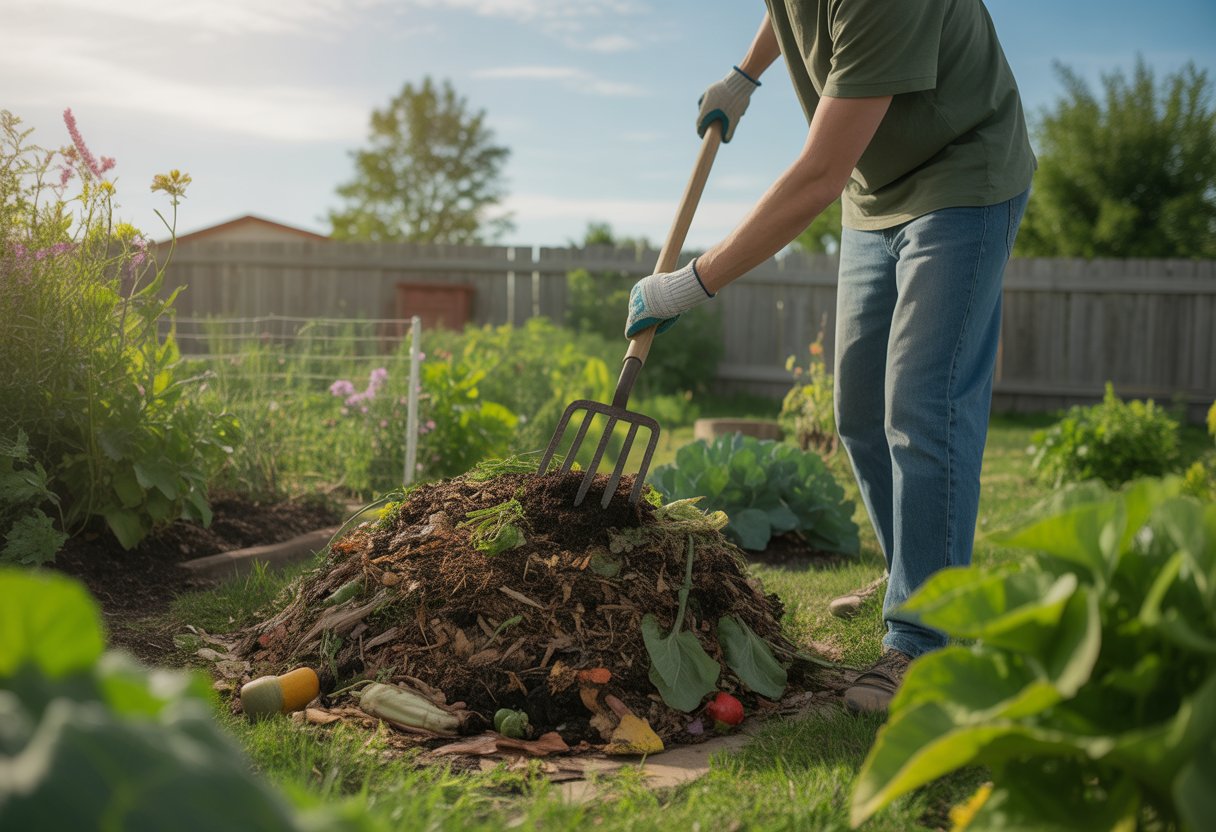
Nebraska’s wild temperature swings and seasons demand a few composting tweaks. Keeping moisture balanced and layering materials helps your pile break down even when the weather’s not playing nice.
Dealing with Nebraska’s Weather Conditions
Hot summers and cold winters definitely affect composting. During dry, hot months, moisture evaporates fast, so you’ll need to water the pile more often to keep it damp.
Using shredded leaves and grass clippings helps hold onto moisture and adds both nitrogen and carbon.
In winter, microbial activity slows way down. Covering your pile with mulch or a tarp keeps it from freezing and lets decomposition crawl along. Planting cover crops before winter can add organic matter and shield the soil.
Turning compost every week or two keeps oxygen flowing, which helps microbes even when the weather’s unpredictable.
Seasonal Compost Maintenance Tips
In spring, add fresh greens like grass clippings to bump up nitrogen and balance out dry browns like shredded leaves. Layering materials keeps the carbon-to-nitrogen ratio in check and the pile active.
Summer’s heat speeds things up but dries out the pile, so keep it moist and maybe move it into some shade. Watering along with adding mulch helps prevent it from drying out.
Fall’s the time to add chopped garden debris and maybe some cover crops for extra organic matter. Turn the pile regularly so it doesn’t get compacted. As winter approaches, seal the pile to hold in heat and get it ready for dormancy.
Applying Compost in the Garden
Compost boosts soil structure, helps it hold moisture, and adds nutrients—if you use it right. Pay attention to how and when you apply compost, and don’t overdo it.
Improving Soil Quality With Compost
Nebraska soils can be heavy clay or super sandy, and compost helps with both. Spread 1-3 inches of compost over garden beds before planting to improve aeration and water retention.
Compost brings in beneficial microorganisms that cycle nutrients and break down organic matter. It even helps reduce soil erosion by improving how soil clumps together.
Mix compost into the top 6-8 inches of soil in planting areas. That way, roots get nutrients where they need them most.
Using Compost in Vegetable Gardens
Compost gives veggies nitrogen, phosphorus, and potassium. Spread 1-2 inches of finished compost before planting—it’ll feed your crops without burning them.
For established beds, side-dress with compost during the growing season, especially for heavy feeders like tomatoes and peppers. Don’t go overboard, though—too much compost can attract pests.
Healthy soil from compost also supports pollinators by encouraging flowering plants around your veggie patch.
Supporting Trees and Shrubs With Compost
Mulch trees and shrubs with 2-4 inches of compost to lock in moisture, which is crucial during dry Nebraska summers. Compost also keeps weeds down and moderates soil temperature.
Keep compost 6-12 inches away from trunks to avoid rot. Lightly tilling compost into the topsoil near roots wakes up microbes and helps roots grow deeper.
Regular compost applications make trees and shrubs healthier and more resilient to drought and disease.
Advanced Composting Tips and Troubleshooting
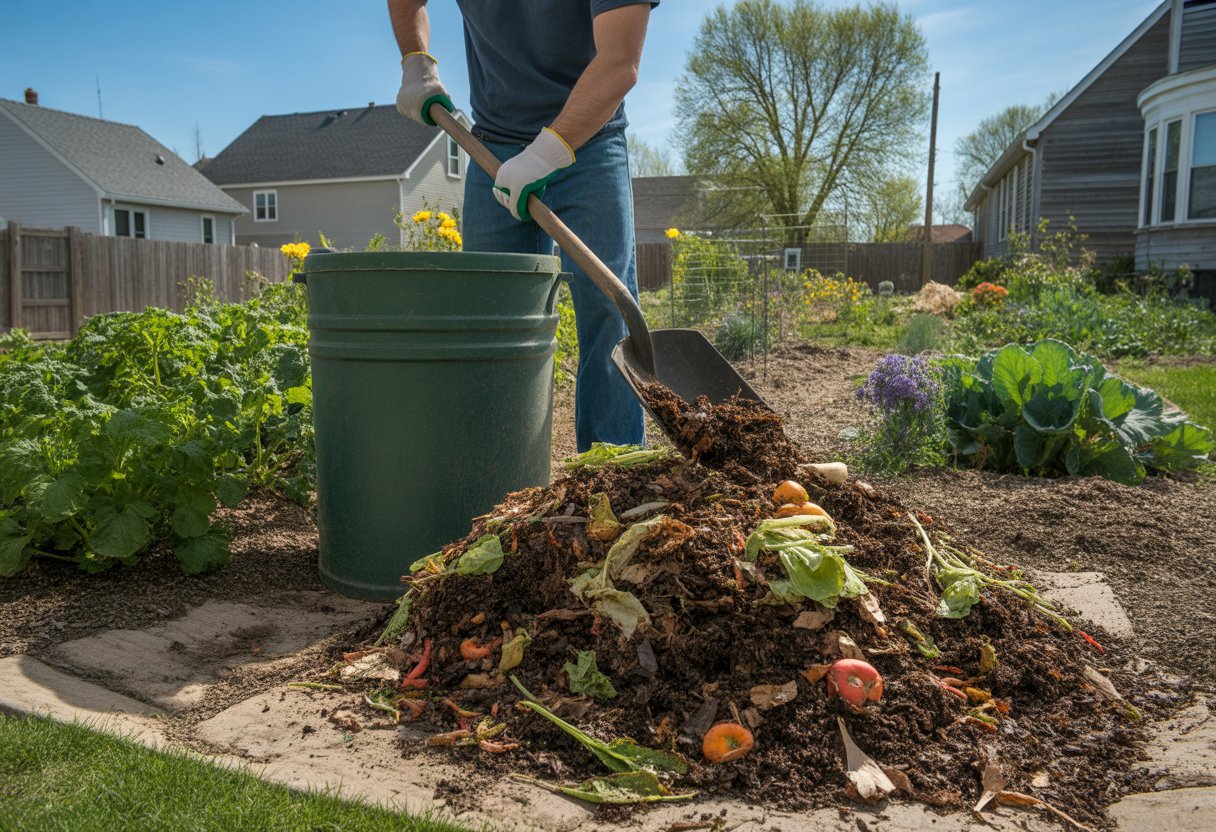
Getting compost right means dealing with pests, odors, and sometimes adding a little extra nutrition. Avoid common mistakes to keep your compost healthy and boost your Nebraska soil.
Managing Pests and Odors
Rodents and flies show up if your compost gets too wet or you add meat and dairy. Cover food scraps with straw or dry leaves and balance your greens and browns to keep pests away.
Bad smells usually mean too much moisture or not enough air. Turn the pile every week or so to get oxygen in and keep things fresh. A weed barrier around your bin can help block critters.
Skip treated wood and anything with herbicides—they mess up decomposition and can attract pests. Nebraska Extension suggests piles at least 3 feet wide and tall for good airflow and heat.
Utilizing Worm Castings and Specialty Inputs
Worm castings add a ton of microbes and nutrients. Red worms break down compost faster and boost soil fertility, but they need a moist, shady spot and regular kitchen scraps.
Specialty inputs like horticultural biochar or cottonseed meal can ramp up microbial activity and nitrogen, but don’t overdo it. A little goes a long way.
Mixing compost with no-till gardening and mulching can really improve soil structure and moisture. Worm castings plus pruned branches make a rich amendment for bulbs and other seasonal projects.
Common Composting Mistakes to Avoid
One mistake I see a lot is ignoring moisture levels. If your pile’s too dry, decomposition just crawls; but if it’s too wet, you’re stuck with rot and those nasty odors.
Always bury kitchen scraps deep in the pile. Leaving them on top just invites critters and smells.
If you don’t turn your compost regularly, it breaks down unevenly and gets hot spots. I try to aerate mine often to keep things moving and avoid that gross, anaerobic funk.
Skip adding diseased plants or anything treated with herbicides. Those can stick around and mess up your garden later.
Balancing carbon and nitrogen matters more than most people think. I aim for a 30:1 ratio—mixing stuff like straw, dry leaves, or shredded paper with fresh greens usually does the trick.
Composting isn’t rocket science, but a little attention goes a long way.

